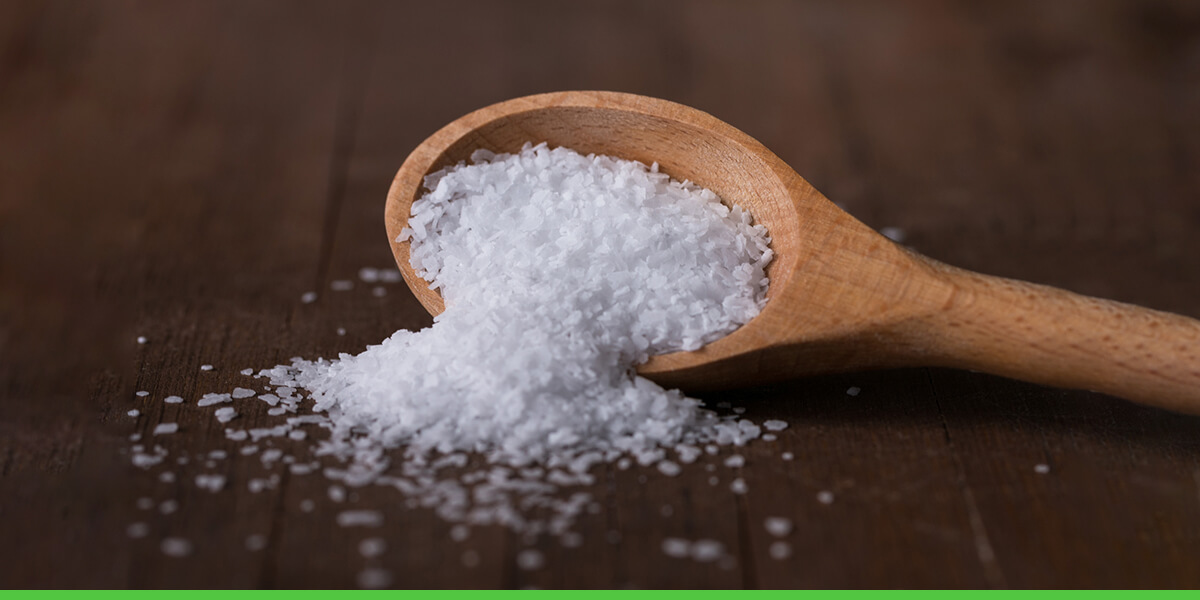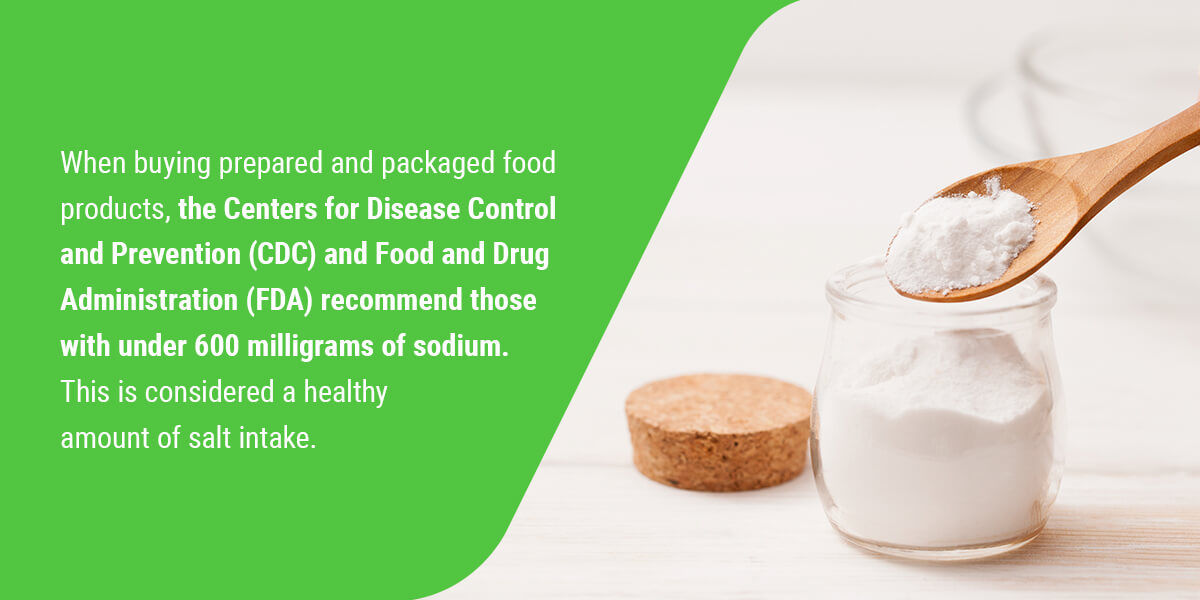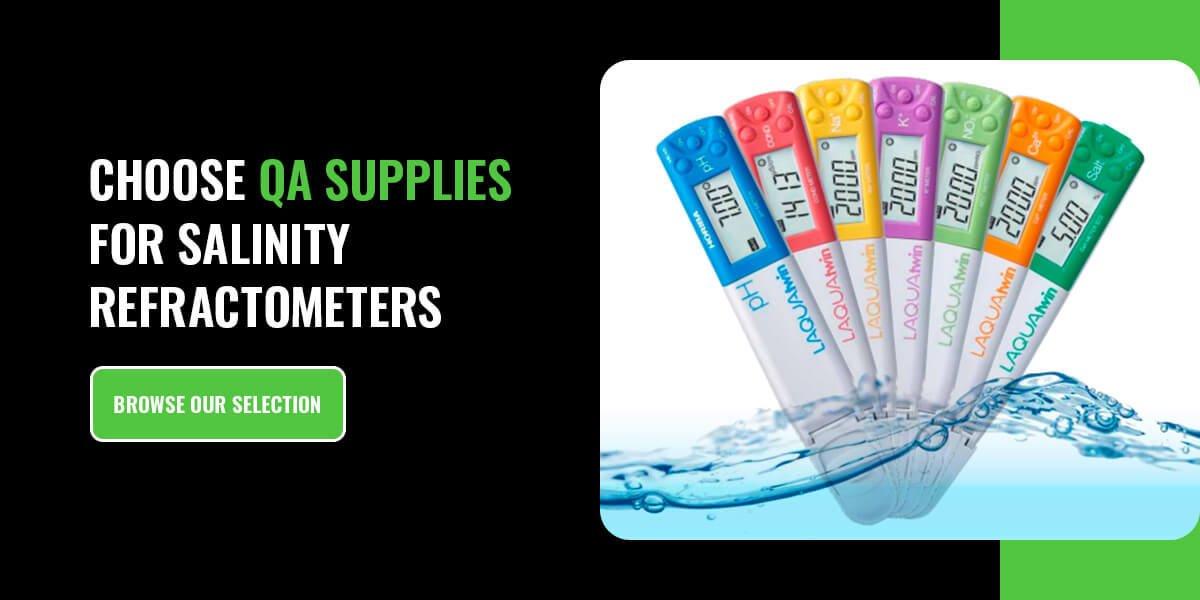Guide to Salinity Testing in Food Production
Mar 3rd 2023

Over 70% of dietary sodium comes from eating packaged and prepared foods. Have you ever wondered why or how food manufacturers measure the amount of salt in their products?
Salinity testing plays an essential role in food production. Learn what goes into this process and how to use refractometers for testing salt concentration in foods and beverages.
Why Is Salinity Testing Important in Food Production?

Salt is roughly 40% sodium and 60% chloride, occurring both naturally and as an additive in foods. It's often added to foods in the form of sodium chloride (NaCI). Producers also use it in other forms, such as:
- Sodium nitrite
- Sodium benzoate
- Sodium bicarbonate (baking soda)
- Monosodium glutamate (MSG)
Food manufacturers add these compounds to serve as a binder, enhance flavor and prevent microbial growth to extend the product's shelf life. Salt can improve the flavor, texture and color of food products, but excessive amounts can be a cause for concern. Too much sodium can cause high blood pressure, calcium loss and in severe cases, heart disease and stroke.
When buying prepared and packaged food products, the Centers for Disease Control and Prevention (CDC) and Food and Drug Administration (FDA) recommend those with under 600 milligrams of sodium. This is considered a healthy amount of salt intake.
Companies are required to measure and specify the amount of sodium in their products under the “Nutrition Facts” section of the label. Sodium is listed with the associated daily value (DV) percentage in one serving. A 100% DV for sodium is less than 2,300 milligrams per day.
When adding salt to their products, food companies must find a balance between flavor, color and texture control while ensuring healthy sodium levels — especially with nutritious dieting and lifestyles growing more popular. That's why salinity testing is a key component in food manufacturing.
What Is a Salinity Refractometer?
A refractometer is an optical instrument that measures concentrations of liquids, such as brines, sugar solutions or engine coolants. As the name suggests, a salinity or saltwater refractometer measures salinity — the concentration of dissolved salts in water. When measuring salinity in a food product, you would blend a solid food sample with distilled water, filter the mixture, then test the liquid portion.
Refractometers use prisms and light to display the amount of salt in a food or beverage product. You place a few drops of liquid onto the prism, then close the clear lid to create a thin water layer across the prism. The liquid layer changes direction when exposed to light — this is called refraction.
The refractometer measures the angle of refraction — or the amount of light shift — which is then converted to the appropriate unit of measure. When using a salt refractometer, these units would be salinity and specific gravity. Salinity uses parts per thousand (PPT) as a measurement unit. When you look through the eyepiece, you can see the measurement scale indicating these units.
Refractometers have low startup costs and don't use any chemical reagents, making them a preferable option for salinity testing. Because they only require small samples at a time, they're great for quantitative use in simple solutions, like a brine solution. Many of these devices aren't just specific to salt — they can also indicate other present substances like sugars, minerals and fats.
There are two main types of refractometers for testing salinity in food products — mechanical and digital. Consider the Atago PR-32 Alpha Refractometer for a reliable digital option, it provides accurate readings and is easy to use.
1. Mechanical
Mechanical or manual refractometers involve placing the sample on a prism, then looking through the eyepiece at the “shadow line” to determine the critical angle. Because temperature significantly impacts the refractive index, the refractometer achieves temperature compensation with bimetal strips. These strips move the lens or scale as they contract or expand with temperature fluctuations.
While cost-effective, mechanical refractometers have limited accuracy due to restricted temperature compensation, ambient light variations and subjectivity of determining the shadow line.
2. Digital
A digital refractometer uses an internal light source at a fixed wavelength. The light moves through the prism and into the food sample. An internal light detector then identifies the critical angle.
A benefit of digital refractometers is that they eliminate the subjectivity of manually determining the shadow line. They also use preprogrammed algorithms to improve temperature compensation. Furthermore, they can measure over broader temperature ranges at a low-moderate price.
How to Use a Refractometer for Salinity Testing
Using a refractometer is simple. Follow these steps:
- Open the prism cover.
- Place a few drops of water onto the prism.
- Close the cover.
- Look through the eyepiece and adjust the focus as needed.
Reading a Refractometer
When looking through the eyepiece, you'll see the scale for specific gravity and salinity with a noticeable color shift between the upper and lower scale sections. This color separation line indicates the salinity level in PPT and specific gravity measurements.
Here are some tips to ensure an accurate reading:
- Clear the prism. Try to keep the prism clean and free of fingerprints. Steer clear of paper towels and regular cloths when wiping the prism, as they can cause scratching. Use a soft eyeglass cloth instead.
- Rinse off the salt water with reverse osmosis (RO) water. Any lingering residual salt can cause inaccurate readings the next time you use the refractometer.
- Handle the device with care. Dropping or knocking around the refractometer can misalign the optics or damage the internal components.
- Calibrate regularly. Calibrating the device at least once a month — better yet, before each time you use it — helps ensure precise readings.
How to Calibrate Your Refractometer
Most refractometers are used for measuring sodium chloride or brine solutions. Brine's refractive qualities differ slightly from those of true saltwater. Calibrating the refractometer with a salt standard that compensates for this difference can help. Follow these steps:
- Open the cover, then wipe the prism with a soft eyeglass cloth to remove fingerprints and salt residue. If necessary, rinse it with RO water and dry it with a soft cloth.
- Place a few drops of calibration solution, distilled water or RO water onto the prism, then close the cover.
- Wait roughly 45 seconds for the internal system to adjust for temperature.
- Make slight adjustments with the calibration screw if the reading doesn't match the calibration solution.
Choose QA Supplies for Salinity Refractometers
At QA Supplies, you can find portable, durable and high-quality refractometers that measure salinity, proteins, sugars and other properties. Many of these devices include water-resistant capabilities and can withstand harsh conditions.
You can seamlessly calibrate many of our refractometers with distilled water, or you can send them to us to ensure correct calibration. We also provide eyepieces, lens covers, carrying cases and other accessories. Browse our selection of refractometers today!


